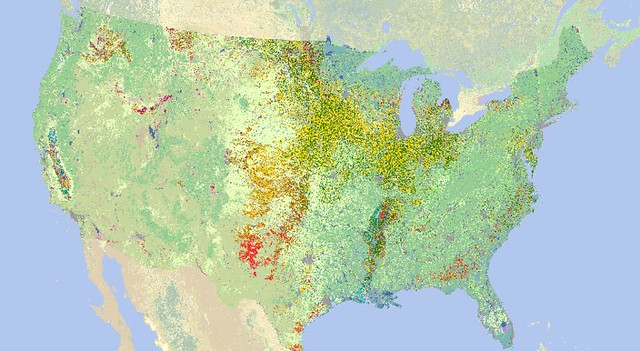
After a trip to Colorado’s Pikes Peak in 1893, Katharine Lee Bates wrote the lyrics to “America the Beautiful.” The memorable words paint a sensory-rich picture of “amber waves” and “fruited plains” that celebrate our land and the true wealth of any nation – agriculture. Today, according to the 2017 Census of Agriculture, the United States has more than 900 million acres of land in farms; that’s 40% of all U.S. land. And we rely on the 3.4 million producers, around 1% of our population, to manage that land and provide food, feed, fiber and fuel for our nation and the world.
This Earth Day is another opportunity to think about the dynamic role that our producers play in the stewardship of the land. In the face of 21st century challenges, like feeding a growing population while managing limited natural resources, our producers continue to provide safe, reliable, and plentiful bounty with the help of science.
Data from the 2017 Census of Agriculture show an increase in the use of renewable energy systems. Solar panels are the most used renewable energy system, with 90,142 in place to harness the power of the sun. Wind turbines, small hydro systems, methane digesters, biodiesel and ethanol production systems and more are also used to help maintain a verdant land for future generations.
Producers employ many other practices to conserve their farmland and improve productivity. These practices, such as conservation tillage, tile and surface drainage, and planting cover crops, protect the land from water and wind erosion, improve water quality, provide wildlife habitat, and reduce producers’ operating costs. According to the 2017 Ag Census, 53,920 farms had more than 13 million acres of land under conservation easement – voluntary and binding agreements that protect the land for intended uses.
Data from the Ag Census help support USDA’s Science Blueprint (PDF, 2.6 MB) and build on overall climate research and resiliency knowledge to help better protect our planet’s resources.
Though the lyrics to “America the Beautiful” may stay the same, we know that change is a constant. With the participation of farmers and ranchers, USDA’s National Agricultural Statistics Service produces the data to help decision-makers and the agriculture industry navigate the changes and challenges from one Earth Day to the next. To learn more about American agriculture, visit www.nass.usda.gov/Publications/Highlights.
